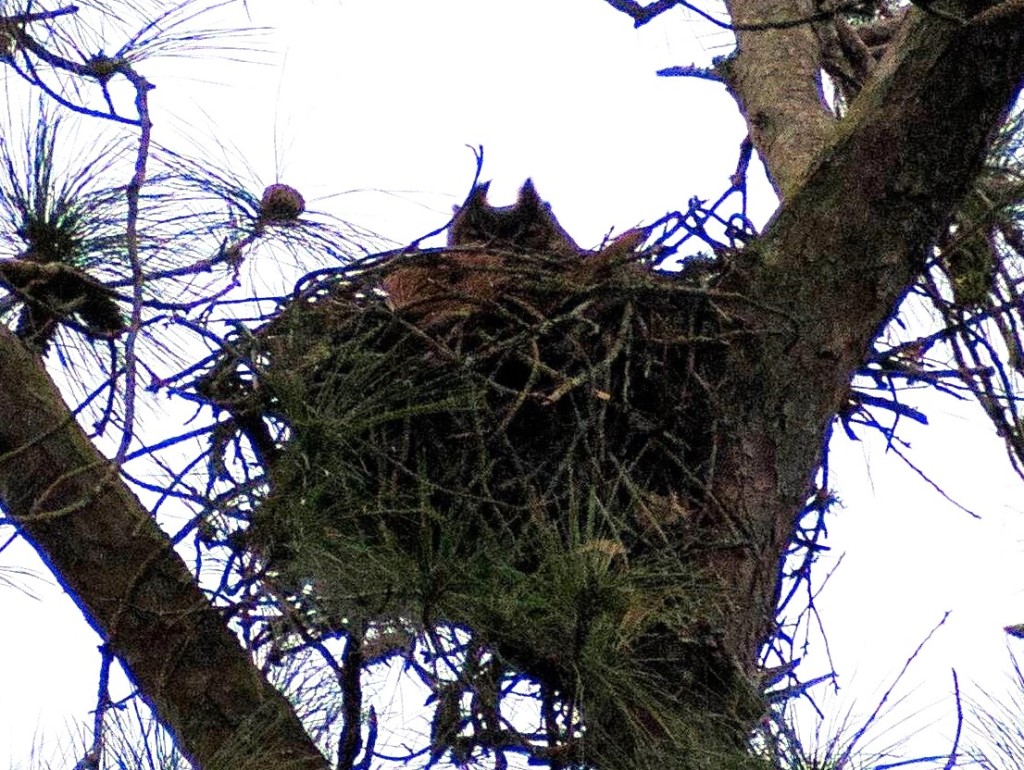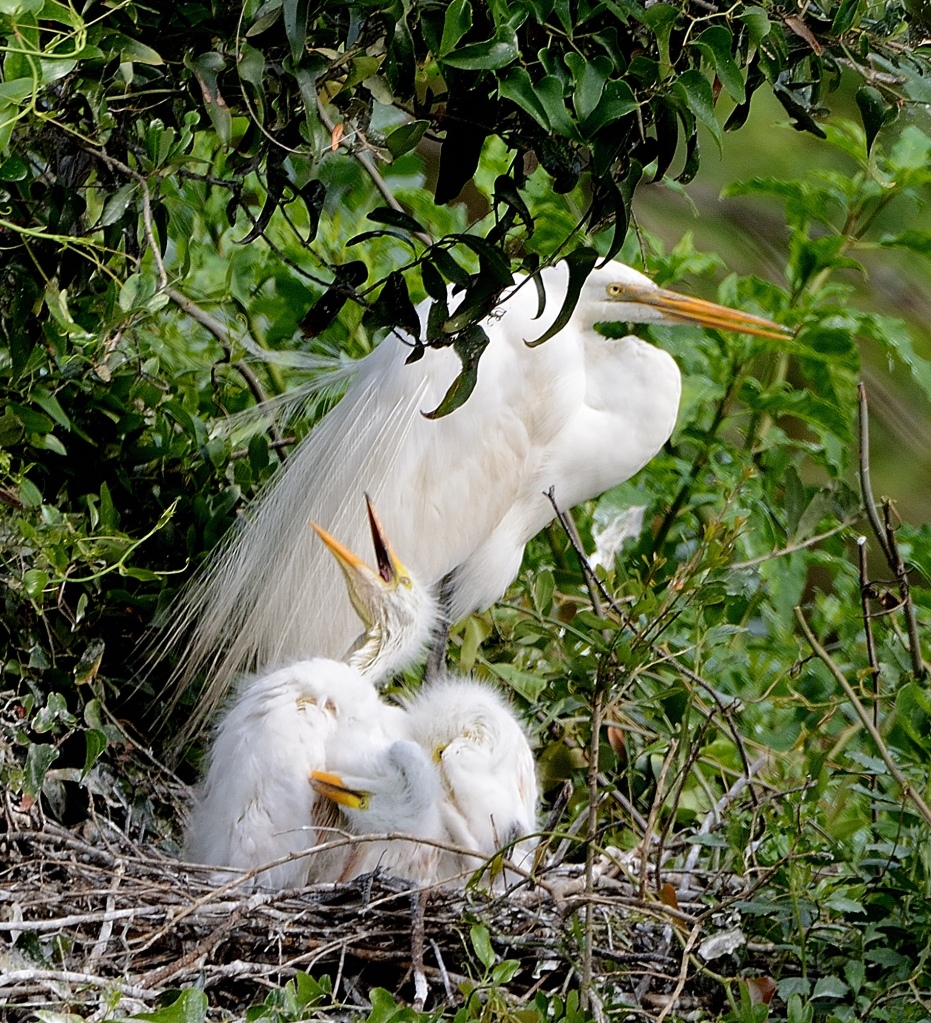As winter draws to a close and spring arrives, so do families of nestling and fledgling birds. The birds of Seabrook Island are familiar to us, holding a special place in our hearts, and never more so than during nesting season. Social media is full of beautiful close-up portraits of birds displaying courting behaviors, nest building, tending to their eggs, and finally parents caring for baby chicks. Who can resist a fuzzy, fluffy baby bird!



As birders and bird photographers, we have the responsibility to give the birds plenty of space to raise their family, and to respect the private property on which these nests are built. Seabrook Island Birders follows, and recommends, the principles and guidelines set forth by The Audubon Society. Wildlife photographer Melissa Groo says it best in an article written for Audubon. Here are some of the highlights from that article.
Do your research
Spend some time learning about your subject before you head out. What are the threats to the young? What do the birds eat? What eats them? Is the species a skittish, furtive nester? What is its conservation status? If your subject is threatened or endangered, minimizing your disturbance is even more critical. Successfully raising and fledging young are how a species survives—it’s that simple.
Learn to read signs of alarm
Ethical photography requires being constantly aware of the behavior of our subjects, and on the lookout for signs of stress or fear. These may vary across species, but common distress behavior may include: a stiff upright posture and a widening of the eyes (especially for owls); head bobbing; attempts to look as big as possible, sometimes with wings flared out; a posture that may signify flight; and vocalizations like bill clacks or alarm calls.
Another sign of alarm is, of course, a parent taking flight as a direct result of our presence or proximity. This is where immediate risks may be most severe. Unprotected nestlings or eggs can be threatened by the hot sun, wind, or chilly temperatures much more quickly than we realize. A photographer once set up a blind near an American White Pelican rookery, unintentionally flushing the parents, which stayed away all day. As a consequence, hundreds of chicks perished in the direct sun from heat exposure. Adults should never be kept off nest.
The other possible danger of separating an adult from young is exposing chicks to ever-vigilant predators, both aerial and ground. Many other animals— from ghost crabs to crows to jaegers—are waiting for just that opportunity.
I’ve heard photographers in Florida complain about waiting at an owl nest for hours, frustrated that they’re unable to get the “food delivery” shot. What people may not realize is that parents could either be afraid of them or instinctively reluctant to draw attention to the nest by returning to it. If an hour or two has passed with no sign of the parent, retreat a good distance to see if you’re what’s keeping the parents away.
Keep your distance
To give much needed space to birds at nests, telephoto lenses of at least 400mm are recommended. But how far away do you need to be? There’s really no hard-and-fast rule. Some backyard nests, for example, can withstand closer proximity than, say, a woodland warbler’s nest in the forest. The sensitivity of individual birds can also vary within the same species, depending on location. Many of Florida’s Great Horned Owls appear quite comfortable near humans, while in other parts of the country they can be very sensitive to disturbance. A robin’s or Mourning Dove’s nest in your front yard may occasionally bear closer scrutiny. A kingfisher’s nest on a riverbank, or a kestrel’s wood box, most often cannot.
Drones should never be used for nest photography. Some photographers may be tempted to turn to drones for close-up nest shots, but these devices can pose risks, creating alarm and stress in nestlings or their parents, or causing injury to the birds in the case of operator or technical error or if the birds attack the drone. In fact, largely to protect wildlife, drones are banned in all national parks and refuges, and in many state and local parks.
For birds that are skittish at the nest, blinds are advised, whether it’s a pop-up hunting blind or one made expressly for photographers. Set the blind up as far in advance as possible—days or even weeks—so the birds get used to it. Some photographers say that having two people enter the blind and then having one leave can sometimes fool the bird into thinking the blind is then empty. There are also body blinds that are a lot more portable and yield a smaller profile. Lastly, cars can make a great “movable blind.” Many times birds are more comfortable when you’re in your car than on foot.
Keep your visits short. Even if you don’t think your presence is having an effect, there is only so much we can know about our potential impact.
Protect nests from predators
The biggest threat to eggs and chicks, even when parents are present, is predators. Even when nests appear hidden from plain view, be aware that your very presence can alert predators to these nests. Avoid walking right up to any nest, as this creates scent and visible pathways that predators can follow after you are gone.
Habitat around nests should never be disturbed. Never move or remove anything around the nest. All too often, photographers take shears and cut away vegetation from around a nest in order to get a clear line of sight and a “cleaner” image. Those very branches or leaves are likely providing essential camouflage from predators, or protection from wind, rain and sun. The bird chose that site precisely for its particular cover.
Never remove nestlings or eggs from a nest
Eggs, chicks, or nest structures should never by touched or disturbed in any manner, and you should never be close enough to one that you could do so. The stress and disturbance this can cause parents or chicks can be considerable.
Consider the cumulative impact of photographers
Repeated visits by multiple photographers have a cumulative effect. If a nesting bird is disturbed often enough, it may altogether abandon its eggs or chicks. Sometimes it’s clear that lots of birders or other photographers have visited a nest. In that case, it’s best to consider simply foregoing this photographic opportunity. If you do go, keep your visit short.
Protect nest sites after you have taken the photo
Before publishing or sharing images of nesting birds, especially if they’re threatened or endangered, remove all GPS-embedded data from the image. Thinking of sharing your photo on eBird or social media? Keep in mind it is our responsibility to protect sensitive areas and species by refraining from disclosing their location, as the general public may not understand the potentially mortal implications of approaching a nest site. Consider waiting to post until the chicks have fledged from the nest and left the area.
With bird and wildlife photography more popular than ever, these guidelines are good reminders for those who’ve been appreciating and capturing these images for years. And for the new photographer, they are important lessons to be learned in balancing nature and art. Today, we all have a cell phone with a camera at our fingertips, and we want to duplicate the beautiful images we see online. But before we do, let’s first think about how our photos and actions will impact the birds and wildlife we treasure so much. Let’s be considerate of private property, and not trespass unless given permission to be there.
These guidelines are important year-round, but even more critical during nesting season. Let’s observe, document, and learn from nature, but let’s do so ethically and responsibly.
Submitted by Gina Sanders
Read the full article written by Melissa Groo here.
For additional Audubon articles on ethical bird photography, click here.


